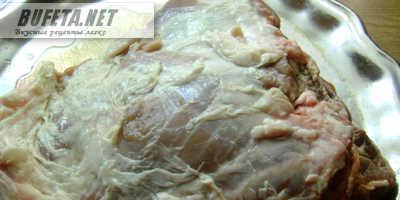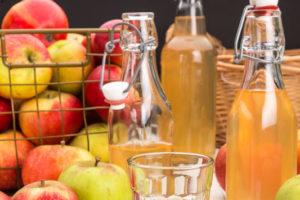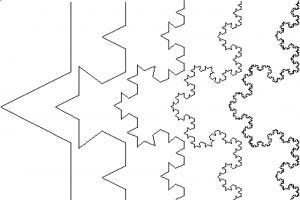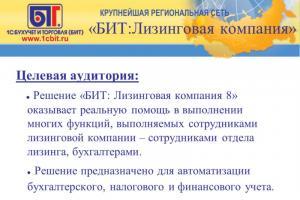With the arrival of spring, every summer resident rushes to plant as many new plants as possible in his garden. If your neighbor in the country has finally shared with you a seedling that has been your dream for a long time, but it does not form roots well, use these tips experienced gardeners. Natural stimulants root formations have powerful biological activity. They enhance cell division and accelerate their growth.
Such regulatory substances are called phytohormones and are classified as biostimulants. By regulating all vital processes in the plant body, they help to significantly increase the growth process. Today, gardeners have access to several types of stimulants - folk remedies containing phytohormones and artificially created substances that are analogues of plant ones.
Natural folk stimulants for root formation.
1. Willow. This tree is capable of secreting juices that contain active stimulants for the growth of the root system of plants. Willow branches are placed in buckets of water. When it takes root, all the twigs are removed, and the resulting liquid is used for cuttings that are difficult to root. Poplar, wild rosemary and willow have the same effect.
2. Honey. Natural honey has a whole complex useful substances. It stimulates growth, has antimicrobial, antiseptic, immunomodulatory effects necessary for rooting. Dilute 2 tablespoons of honey in three liters of water and place the cuttings so that they are more than half immersed in the liquid. It is enough to soak the sprouts in this water for 12 hours.
3. Potatoes. Potatoes saturate the cuttings with starch, vitamins and other substances. To use the tubers as plant food, you need to make a small cut where to place the cuttings. Don't forget to water the potatoes daily.
4. Aloe. Aloe juice (agagave) causes active cell division and increases the immune and protective functions of plants. The root system will develop faster if you squeeze a few drops from an aloe leaf into the water with the cuttings.
5. Yeast. Yeast solution is rich in vitamin B and phytonutrients essential for root growth. When preparing cuttings for planting, it is recommended to soak them for 24 hours in 2 liters of water with 200 grams. yeast. Next, the cuttings are placed in clean water for further rooting. There is no need to pour out the remaining mixture with yeast, it’s wonderful. organic fertilizer for flower beds or vegetable beds. 
Use of growth regulators.
They help in rooting cuttings, enhancing growth, and increasing the flowering period of indoor plants.
By stimulating the root system, stimulants will help cure weak and rejuvenate old plants.
They make it possible to get a more powerful horse system. Plants receive the maximum of useful elements from the soil.
Increases resistance to diseases and pests.
They activate the hormonal and enzymatic systems, causing an increase in vegetative mass.
Root formation stimulants have an indispensable effect for both green and woody cuttings. Drugs general purpose they also give good results. They are used for faster rooting and the formation of a more powerful root system. The cuttings are treated with stimulant powder mixed with charcoal and placed in a suitable container with water until the desired result is obtained.
Growth stimulants video.
Natural root formation stimulators have proven their effectiveness over many years of use. experienced gardeners and beginning summer residents. A strong and healthy root system makes plants more resistant to frost, sudden temperature changes and increases survival rate during transplantation. Everyone can decide for themselves whether to use chemical substances or listen to folk wisdom. Let your plants respond to your care with gratitude and give a rich, healthy harvest.
Do you have your own dacha, garden or vegetable garden? Please share this article with your gardening friends:
If there are no special preparations at hand to stimulate root formation (heteroauxin, rootevin, epin, humate, etc.), then you can use folk remedies- natural stimulators of root formation, which were used by our grandmothers and great-grandmothers. These products are no less active than store-bought drugs, and they are also natural.
Honey solution
Natural honey stimulates growth, as it contains biogenic stimulants, and also has antimicrobial and anti-inflammatory effects. Dissolve a teaspoon of honey in 1 liter of water. Soak the cuttings in the solution for 18-24 hours, then rinse with water and immediately plant in the ground or place in clean water before planting. The cuttings can be completely immersed in honey tincture.
A solution of aloe juice, honey and ash
Cut 1-2 aloe leaves, put in the refrigerator for a day or two, then squeeze the juice out of it. Make a solution: 150 g of settled or spring water, 2 teaspoons of aloe juice, 1 teaspoon of honey, 1 teaspoon wood ash. Stir everything and lower the lower sections of the cuttings into this solution for 6-12 hours. After this, the cuttings are planted in a container with prepared moist soil. Cover the top of the container with a transparent bag, and remove it when young leaves appear.
Egg white solution
Pour the egg white into a glass of warm water, leave for a week, then dilute 1:2 with water (1 part infusion, 2 water). The solution is ready, although the smell is not entirely pleasant. We water planted cuttings, seedlings, perennials or diseased specimens. The solution is excellent - even plants that show no signs of life come to life after 3 times of treatment.
Yeast solution
Yeast 1 g (1/4 teaspoon) diluted well in a little warm water. Place the cuttings in the solution for a day. Then wash them and plant them in prepared soil or put them in a jar with clean water where to leave before boarding.
Willow infusion
Place a couple of willow (willow) branches in water for a week. Then they are taken out and the necessary cuttings are placed in this water until roots form. As the water evaporates, it is added.
Male fern infusion
Brew the leaves of the male fern in 10 liters of boiling water and leave for two days. This infusion not only stimulates root growth, but also increases the tone of plants and their resistance to adverse natural factors.
Potato Nutrients
A potato tuber is perfect place for transporting cuttings. To do this, sections of the cuttings are inserted into the tuber 3-5 cm, i.e. Place a potato tuber on the cuttings on both sides. However, potato juice also stimulates the formation of roots. It is enough to cut a potato tuber, insert cuttings between the two halves, and after 2-3 weeks the cuttings will have good roots. To prevent the potatoes from drying out, you need to wrap them in a plastic bag or you will have to spray them with a spray bottle every day.
Rhodiola rosea
Dissolve 5 drops of Rhodiola rosea extract in 1 liter of water. The cuttings are kept in the solution for up to 2 days, then planted in prepared soil.
Aloe juice (agave)
Aloe juice increases immunity, strengthens plant defenses, affects cell division, and promotes accelerated root formation. Dissolve 5-7 drops of aloe juice in 1 liter of water. The cuttings are kept in the solution for 18-24 hours, then planted in prepared soil. You can then water your indoor plants with this solution.
You can cut 1-2 aloe leaves and put them in the refrigerator for 5-7 days. Then remove from the refrigerator, add water, leave for 2-3 days and the growth stimulator is ready. In this solution you can soak seeds before planting, water planted seedlings, cuttings, newly planted perennials, trees and shrubs, as well as indoor plants.
Nettle infusion
100 g of fresh nettle leaves are poured into 1 liter of water and left for a week. Cuttings and seeds are kept in solution for up to 12 hours, then planted. You can use dry leaves: 1 tablespoon per 1 liter of boiling water, leave for 3-5 days, then water seedlings, cuttings, any plants.

Onion peel infusion
Pour 100g of onion peel into 1 liter of boiling water and leave for 2 days. Dilute 1:3 (1 part infusion and 3 parts water). You can water cuttings, seedlings, and transplanted plants with the solution.
Wood ash infusion
For 1 liter of water, take a tablespoon of wood ash. We dip the cuttings into the solution for a day, then plant them in prepared soil or place them in ordinary clean water.
Material prepared by: Yuri Zelikovich, teacher of the Department of Geoecology and Environmental Management
Kornevin is a root formation stimulator based on indolylbutyric acid (IBA), belonging to the auxin group. Unlike heteroauxin (indoleacetic acid), the acidic “tail” of ICA is longer (on the left in the figure), which determines the longer and milder effect of root.

The commercial preparation Kornevina is a white, beige or pinkish powdery powder in the center. Packaging - in bags of 4-5 g for indoor gardening, cottages and small individual plots, or bags for use over large areas, on the right.
Advantages and disadvantages
The main advantages of root wine are its affordability and the ability to prepare substitutes with your own hands, see below. The use of root for vegetative propagation cuttings will cost approx. 1 rub. per plant. Another important advantage of root is full compatibility with most agrochemicals and plant protection products. In case of doubt, checking Kornevin for compatibility with another drug is also simple: mix 50 ml of both working solutions. No precipitate has formed - compatible.
Disadvantages - specificity of action (also see below); Kornevin is not suitable for all crops. Also the requirements for dosage, methods of preparation, use and precautions when working with the drug are quite strict, see below. A slight excess of the dosage or misuse leads, on the contrary, to oppression and even death of the cutting. Therefore, kornevin as a root growth stimulator can only be recommended to fairly attentive and careful plant growers.
Precautionary measures

Kornevin is a hazard class 3 substance, i.e. moderately dangerous. Root powder is volatile, so you can only work with it on outdoors, balcony, veranda or in a room with supply and exhaust ventilation. When working with root, you need to use PPE: latex gloves, a plastic apron or cape (raincoat), a petal respirator or a dry gauze bandage, and goggles. If the drug gets inside, you need to take activated carbon, 1 tablet per 12-15 kg of body weight, drink 4-5 glasses of water and consult a doctor. In case of contact with skin, rinse immediately with plenty of water. In case of contact with eyes, rinse them with plenty of clean water and consult a doctor.
Features of use
The drug Kornevin should be stored in the dark in a tightly closed container. glassware out of the reach of children and pets. The expiration date indicated on the container is valid only for unopened packaging; The working solution is stored for no more than 12 hours. Therefore, it is necessary to dilute Kornevin (see below) immediately before use and it is highly advisable to purchase the drug in quantities only for current processing.
Story
Charles Darwin first suggested that plants produce substances that affect phototropism - attraction to light; he called them auxins. With the development of biochemistry, it became clear that auxins are a special group of phytohormones and their effect on plants is not limited to phototropism. IMC was first isolated in Russia by N. N. Suvorov and his colleagues. The first industrial technology for the production of IMC was developed by Japanese researchers Mayima and Hoshino in 1925. Further, also in Russia, F. N. Stepanov proposed a much cheaper method for the industrial production of IMC.
Composition, action and dosage
In addition to IBA (0.5% of the dry weight of the substance, or 5 g per 1 kg of commercial powder), the root composition includes macro- and microelements that promote root formation: potassium, phosphorus, manganese and molybdenum. Kornevin is diluted simply: how many grams are in a bag, that’s what a regular one needs tap water. It is also possible to pollinate the roots with a dry preparation, see below. The action of the root is based on the formation of an influx over the cut/fracture - callus; Kornevin as a phytohormone is primarily a stool former. Dormant buds awakened in the callus send out roots much more intensively than on other parts of the cutting, which is clearly visible in Fig.

However, it is necessary to use root with caution. If mother plant by itself, it takes good cuttings (the callus before root formation is small or not noticeable), the root will only delay rooting. Left on the trail. rice. it is clear that bean cuttings without IMC and root root take root and develop better. In this case, the rooting of strong cuttings from a strong healthy plant should be accelerated (if required) with heteroauxin, and the formation of roots on weak ones should be stimulated with epin.

Note: In general, we don’t particularly recommend Kornevin for cuttings herbaceous plants; in this case, its purpose is somewhat different, see below.
Cuttings of plants with moderate or weak rooting (roses, hibiscus, indoor citrus fruits and grapes, indoor pomegranate) together with Kornevin, as a rule, require the use of additional drugs; most often - specific to a given species. For example, rose cuttings root much better if root is used in combination with zircon, on the right in Fig. In any case, 3-7 days after planting a rooted cutting, you need to give it phosphorus-potassium fertilizer so that the rapidly growing roots “suck in” the callus, otherwise the seemingly well-established cutting may rot. Don’t rely on rich soil here; you need quickly absorbed mineral fertilizers.
About cuttings of conifers
Conifers are the most difficult to take cuttings. For them, phytohormones alone are not enough; a special cutting technique is needed. For example, how to propagate from cuttings at home blue spruce and juniper, see video:
Video: about propagation of blue spruce and juniper by cuttings
Cuttings of conifers make sense not only as saving costs on planting material. The species on the list were chosen because, grown from cuttings, these conifers can grow in pots in an apartment. Don't you feel sorry for the Christmas trees that are being cut down en masse? New Year? And so it will be your own, alive. Juniper not only exudes a large number of air-healthy phytoncides, but also produces “berries” (cones in a fleshy shell), which are widely used in pharmacopoeia, for enhancing drinks, etc.
Note, on a morbid topic: Juniper “berries” perfectly absorb fusel oils, while at the same time flavoring the alcohol.
Indications for use
So, based on the properties and characteristics of root, it is preferable to use it as a follow-up. cases:
- For rooting cuttings, mainly lignified ones.
- To stimulate root growth in seedlings.
- To increase the yield of self-pollinating fruits and vegetables (for example, northern varieties of tomatoes) and fruit crops.
- To stimulate the formation of children in ornamental bulbs.
- To enlarge and strengthen tubers/rhizomes of ornamental (not food!) plants and increase their supply of nutrients for the purpose of more successful wintering or propagation by parts of tubers.
- To improve the survival rate of scions.
- To save dying valuable tuberous and rhizomatous plants, for example. orchids.
Note: It makes no sense to treat seeds with root to increase germination, as is sometimes advised. IBA does not have a noticeable beneficial effect on seeds.
Rooting
Root cuttings can be rooted dry and with a solution. The dry method (see below) is more effective, but requires greater consumption of the drug and carries a greater risk of rotting of the cuttings. It is used if cuttings of a given species do not take root with the solution. The dry method is applicable after attempting rooting with a solution, if callus formation does not occur 1-2 weeks after treatment. To diagnose, examine the cutting under a magnifying glass: if even tiny sagging is noticeable, continue rooting with the solution. Instructions for rooting tree cuttings using root solution look like the following. way:
- Prepare a basic solution of root: 1 g of the drug per 1 liter of water, see above;
- Cut a stalk with 3-4 leaves;
- The bottom leaf is cut off (not torn off!) so that a piece of its petiole covers the leaf bud;
- The slice is dried with filter paper;
- The cuttings are dried in the shade at room temperature until juice flow stops (usually 1-4 hours);
- The cutting is kept in a basic root solution for 10-15 minutes, immersed along the petiole of the cut leaf. The solution should not cover the leaf bud!
- While the cuttings are standing in the solution, 5-7 tablets of activated carbon are crushed;
- If rooting occurs in water, pour crushed coal into it. For rooting in the soil, coal powder is mixed with it. The substrate for rooting must be prepared in advance: calcined, treated with a biocide, etc. In both cases, a pinch of coal powder is left;
- The cuttings are removed from the solution and, while still wet, “dipped” into crushed coal for disinfection. Coal powder is to plants what brilliant green, iodine or mercurochrome are to us;
- The cuttings are placed/planted in a container for rooting;
- If rooting is carried out in water and the roots are not visible, after a week and possibly another week, the tip of the cutting is examined under a magnifying glass (see above). If there are signs of callus formation (point swellings like awakening buds), the cuttings are planted in a peat pot with greenhouse soil and watered a little (1-3 tablespoons) every day. You can cover it with a jar, which is removed in the morning and evening for 10-20 minutes for ventilation.
Dry
To treat with dry root, instead of soaking in the solution according to step 6, the cutting is dipped in root powder down to the remainder of the last leaf (do not pollinate the bud!), see Fig. Further everything is according to the instructions, but pp. 1 and 9 are excluded.

For seedlings
To enhance root growth, it is advisable to treat seedlings with root in places north of the black soil strip in cool years, when planting in the ground has to be postponed so that the plants have time to develop properly during the shortened growing season due to the increased work of the roots. IN favorable years and in warm places, the roots will only “pull” the resulting nutrients from the green mass into the roots, which will at least lead to a decrease in yield. In these cases, the seedlings are watered with a basic root solution of 20-50 ml (1-2 tbsp) per plant 1-2 weeks after the first picking and 3-5 days before planting.
Kornevin and harvest
To increase the fruiting of fruits and vegetables, berries and fruit crops, use a basic solution of root for garden crops and shrubs and a double concentration (2 g of the drug) per 1 liter of water for trees. Weather conditions and restrictions on stimulating yield with root roots, depending on weather conditions, are the same as for seedlings, see above. Watering is carried out in the evening of a warm day after the leaves of trees and bushes have fully unfolded and at the beginning of budding of plants in the garden. Trees and shrubs should be completely healthy. Watering rates:
- Adult (consistently fruiting tree) - 2-3 liters in a well-moistened circle around the trunk.
- A young tree is the same, half the size.
- Adult bush - 0.35-0.5 liters per bush.
- A young bush is half as large.
- Garden crops - 0.1-0.2 liters of base solution per plant (!).
Note: It is not advisable to water edible bulbs, root vegetables and potatoes with root crops; the harvest will be skinny and “hairy”.
Flowers
Ornamental bulbous, tuberous and rhizomatous plants are prepared with the help of roots for successful wintering also in unfavorable years (see above). On the contrary, it is favorable for vegetative propagation by underground parts. Treatment – soaking the planting material for 2-3 hours in a base solution. The bulbs are immersed in the solution at the bottom (dry pollination is highly undesirable); Tubers and rhizomes are soaked completely submerged. After soaking, the treated planting material is rinsed in clean water and immediately planted.
Note: For the same time, garden grape cuttings are soaked in a basic solution.
For vaccinations
An increase in the survival rate of root grafts is possible in favorable years if the grafting is done by budding. In this case, the calla-forming properties of IMC are used. The grafting, before bandaging (applying a bandage), is sprinkled with root. If the scion has taken root, the remainder of the leaf cutting will bulge and fall off after 1-3 weeks. Suddenly it wrinkled, withered and pressed against the trunk (branch) of the rootstock - the grafting was unsuccessful.
Saving the Lost

Reanimation of withering indoor flowers with root is most often used for orchids that have become ill in too dry and warm rooms, but is also effective for domestic seasonal plants depleted by improper maintenance, for example, gloxinia and cyclamens. In the latter case, untimely grown leaves and roots are removed from the tuber/rhizome, the remainder is allowed to rest, as required by the rules of the culture of this species (a dormant period is forced), and then the planting material is soaked as described above. The revival of dying orchids with rotten roots with a root solution is carried out as follows. instructions:
- The plant is carefully removed from the substrate;
- Clean and wash the root system, as in preparation for replanting;
- Remove old, weak and diseased leaves, leaving only young and healthy ones;
- The roots are inspected, all rotten ones are removed, “grabbing” at least 1.5-2 cm of a healthy root;
- If the roots are completely rotten, remove them all, leaving only the bottom of the plant and 1-2 of the freshest leaves;
- The orchid is kept for 2-3 hours in a warm (24-27 degrees) dark place to dry the sections;
- The bottom or root system is soaked in a base solution, as when rooting cuttings (see above), but its temperature should be 2-3 degrees above room temperature;
- The plant is transferred to a container with water at the same temperature (slightly warmer than room temperature) and activated carbon at the rate of 1 tablet per 1 liter of water. Water should not cover the leaf axils or get into them!
- The container with the flower is wrapped in light-proof material and transferred to a warm, bright place, but not in direct sunlight;
- The air around the plant is moistened 2-3 times a day with a spray bottle that produces a misty stream;
- Every day, add water at a temperature also 2-3 degrees above room temperature to replace what has evaporated;
- If within 2-2.5 months. young roots appeared, resuscitation was successful, the patient will live. The plant can be planted in a suitable substrate.
Note: In the same way, you can bring back to life accidentally broken plants with fragile stems, for example. dracaena. Treat the upper part with the crown with root.
Substitutes
In many cases, for rooting cuttings (except, perhaps, coniferous ones), it is possible to replace purchased rootstock with biostimulants of root formation from natural products containing IBA:
- A teaspoon of honey is diluted in a liter of water. The cuttings are kept in the solution for 10-12 hours, then planted in the ground. The remainder of the solution is poured into the root hole.
- 100 g of baker's yeast are diluted in 1 liter of warm water. The cuttings are soaked in the solution for a day and planted in place.
The percentage of rooted cuttings after this treatment is lower than from root, but there is no danger of burning the cuttings with the drug. But observations of the process of vegetative propagation will provide experience that will allow a successful transition to the use of Kornevin and other strong biostimulants.
prepared by Ziborova E.Yu.
To increase the likelihood of rooting, to accelerate the formation of roots on cuttings (especially those that are difficult to root), to obtain a more powerful root system, it is recommended to treat the cuttings before planting with growth stimulants (phytohormones), which promote the beneficial accumulation of organic substances at the site of root formation. For successful cuttings of woody plants, growth stimulants are often used:
- heteroauxin (fine crystalline powder of white, pink or yellowish color);
- beta-indolylbutyric acid (outwardly similar to heteroauxin);
- beta-indolylacetic acid and alpha-naphthylacetic acid (white or grayish powders).
Growth stimulants have great biological activity, so they are used in very small concentrations (according to instructions). For treating cuttings with solutions growth stimulants use glass, porcelain or enamel dishes. Treatment of cuttings with growth stimulants is carried out in a darkened room at a temperature no higher than 20-23 degrees (higher temperatures are dangerous, and at 28-30 degrees poisoning of the cuttings occurs).
Three methods of stimulating treatment of cuttings are most often used:
- immersion of the lower ends of the cuttings in aqueous solutions of stimulants (solutions of low, medium or high concentration are prepared);
- immersing the lower ends of the cuttings in alcohol solutions of stimulants (used to treat cuttings of plants that cannot remain in water for a long time, as well as for propagating rare and valuable plants);
- treatment of the lower ends of the cuttings with dry growth powder (a mixture of a growth stimulant with talc or crushed charcoal, usually at the rate of 1-30 mg of stimulant per 1 g of talc or charcoal).
Root formation of cuttings is further enhanced by treating their lower ends before planting with a mixture of a growth stimulator with vitamin C (ascorbic acid) or vitamin B1 (thiamine). Vitamins also contribute to faster growth of shoots in rooted cuttings (however, the use of only vitamins to improve root formation and better growth shoots from cuttings, without the use of growth stimulants along with vitamins, does not give a positive effect). When preparing aqueous or alcoholic solutions of a growth stimulator, when preparing growth powder, one of the above-mentioned vitamins is added to them, after dissolving its powder in a small amount of water. After preparing an alcohol solution of the stimulant, a vitamin is added to it in the following concentration: vitamin C - 20-50 mg per 1 ml of 50% alcohol, vitamin B1 - 2-20 mg. When preparing growth powder, dissolved vitamin is added to it at the rate of: vitamin C - 50-100 mg per 1 g of talc or coal, vitamin B1 - 5-10 mg per 1 g.
A freshly prepared growth stimulator solution along with a vitamin solution added to it is used immediately after cutting the cuttings; the depth of immersion in the growth stimulator solution depends on the length of the cuttings and the degree of their lignification.
Green cuttings are immersed in the solution by 2-4 cm (no deeper than a third of the length) and kept in it for 10 hours to a day (according to the instructions); The processing time depends on the concentration of the solution and the type of stimulant. The short length and the presence of leaves in green cuttings contribute to enhanced absorption of the stimulant by the cuttings along with water. Lignified cuttings are immersed in the solution up to half or two-thirds of the length of the cutting.
In growth powder prepared in advance for dry treatment of cuttings before planting, the content of a growth stimulant can vary within significant limits (depending on the desired activity of the stimulant). To prepare growth powder, the stimulator is first dissolved in water, and then this aqueous solution is thoroughly mixed with talc or charcoal and a vitamin solution. The resulting mixture is dried in a dark place at a temperature of 50-70 degrees; The powder is stored in a tightly closed opaque container. To treat the cutting, its lower part is moistened with water, dusted with growth powder and immediately planted. Amateur gardeners often use Epin, Kornevin, Sodium Humate, Zircon, and aloe juice when rooting cuttings as growth stimulants. Seeds, corms and cuttings are also soaked in growth stimulants before planting.
perennial plants
. The Epin solution has proven itself very well as a natural bioregulator when used for spraying to maintain plant immunity during the rooting process, before and after picking seedlings and under stressful plant growing conditions. prepared by Ziborova E.Yu. (Based on materials from the book by V.S. Kholyavko, D.A. Globa-Mikhailenko “Dendrology and the fundamentals of green construction”)
|
|
All about plant propagation
on the website website
Weekly Free Site Digest website
Every week, for 10 years, for our 100,000 subscribers, an excellent selection of relevant materials about flowers and gardens, as well as other useful information.
Subscribe and receive!
I bought cuttings of new grape varieties and want to grow seedlings from them. What root formation stimulants can be used to help the cuttings take root better?
Nikolay KOVALENKO, Kremenchug are becoming increasingly popular. They are successfully used in viticulture to improve rooting when propagated by cuttings. The characteristic functions of this category of substances are stimulation of root formation and growth. Root regulators are biologically active substances and therefore require very careful handling. An overdose of these compounds is very dangerous: you can not only not get the expected effect, but also experience the exact opposite result.
Processing of cuttings or roots of seedlings must be done using personal protective equipment. It is not recommended to smoke, drink, or eat while working with stimulants. After work, you need to wash your face and hands with soap. All preparations for stimulating root formation should be stored in a cool, dry place, away from food products and medications, in places inaccessible to children and pets. When purchasing root stimulants, you need to check their expiration dates.
The most commonly used drugs that stimulate root formation are: heteroauxin, rootin, zircon, humisol, sodium humate.
The most common root formation stimulator is heteroauxin (indolyl-3-acetic acid). This substance has high physiological activity. Available in the form of tablets that are not toxic, but have bad smell. They are highly soluble in alcohol, but poorly soluble in water. Therefore, to obtain a solution of heteroauxin, it is better to initially dissolve it in alcohol; for these purposes, you can use ethyl or formic alcohols, and then mix the prepared alcohol solution with water to the required concentration. Decomposes quickly in light. The optimal concentration of the solution is considered to be 0.02% solution; it is recommended to soak the cuttings for 18-24 hours, immersed 2/3 of their length, while the upper part of the cutting with the eye should remain above the solution. To increase the effectiveness of heteroauxin when rooting cuttings, you can combine treatment of cuttings with zircon (1 ampoule per 10 liter of water) and heteroauxin (200 mg per 1 liter of water).
Kornevin is an analogue of heteroauxin and is a dusting composition. Root formation on cuttings is greatly facilitated by using this stimulator of root formation and growth. The active ingredient of this drug, 4-(indol-3-yl)butyric acid (IBA), is gradually converted in the plant into the phytohormone heteroauxin, providing best effect, including a milder and longer-lasting effect in the lowest doses compared to other auxins. In addition, the use of root in the form of a dusting composition allows, due to its good adhesion to the surface of cuttings, to enhance the penetration of the active substance into plant cells, significantly increase the efficiency and simplify the technology of using the drug. Before treating with this drug, the cuttings are immersed in water for several hours. Slightly damp cuttings are then immersed with the lower end into the powder contained in the bag by about 1 cm. Then the cuttings are planted in moist soil or substrate without excess water. On average, 0.1-0.3 g of root is consumed per cutting. You can soak the cuttings in the working solution of this drug, as well as in the heteroauxin solution for 18-24 hours.
Zircon is a good stimulator of root formation. It is obtained from plant materials - Echinacea purpurea. The active ingredient is hydroxycinnamic acids. The solution is packaged in polypropylene ampoules. The drug stimulates the formation of roots when rooting cuttings, if the cuttings are soaked before planting in a working solution of 1 ml per 10 liters of water for 14 hours. Significantly increases the effectiveness of its action when mixed with heteroauxin (200 ml per 1 liter of water) during joint processing.
The use of humisol gives good results in improving the rooting of cuttings. It is a brown liquid with high content humic substances, odorless. Contains all components of vermicompost in a dissolved and physiologically active state: humates, amino acids, vitamins, natural phytohormones, micro- and macroelements, spores soil microorganisms. Humosol stimulates root formation. To do this, grape cuttings 2/3 of their length are soaked for 24 hours in a solution of humisol with a concentration of 1:25.
An effective means of stimulating the formation of roots on cuttings is sodium humate. Its active ingredient is sodium salts of humic acids. This is a soluble powder or dark-colored tablets. The drug stimulates the biochemical processes occurring during root growth. To soak the cuttings, use a solution of sodium humate in a concentration of 3-5 g (1 teaspoon) per 10 liters of water. Humates are harmless to human health, do not accumulate in plants, and do not contain weed seeds or pathogenic microorganisms.
For a long time, bee flower honey has been used as a natural stimulator of root formation on grape cuttings - this is flower nectar processed by bees. Pure flower honey contains more grape and fruit sugar and less reed. Contains a number of enzymes and vitamins B, PP, C, K, E, ascorbic acid, 35 minerals and other elements.
Flower honey contains so-called biogenic stimulants, as well as growth substances (bios). Therefore, grape cuttings treated with a honey solution take root well. As a stimulator of survival, we use honey in concentration: one tablespoon (no more) per bucket of water. Honey is pre-dissolved in warm water. The soaking period is 2 days. The cuttings can be completely immersed in the honey solution. Honey produced by bees from sugar is unsuitable for soaking cuttings.








